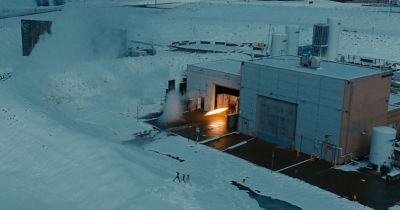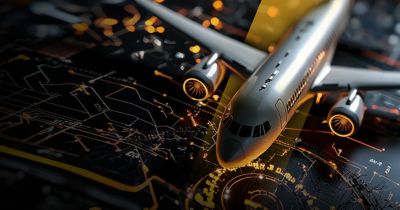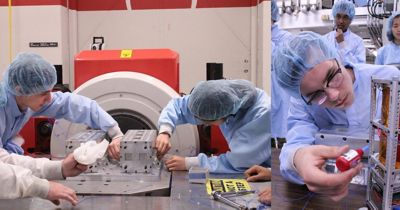-
United States -
United Kingdom -
India -
France -
Deutschland -
Italia -
日本 -
대한민국 -
中国 -
台灣
-
Ansys는 학생들에게 시뮬레이션 엔지니어링 소프트웨어를 무료로 제공함으로써 오늘날의 학생들의 성장을 지속적으로 지원하고 있습니다.
-
Ansys는 학생들에게 시뮬레이션 엔지니어링 소프트웨어를 무료로 제공함으로써 오늘날의 학생들의 성장을 지속적으로 지원하고 있습니다.
-
Ansys는 학생들에게 시뮬레이션 엔지니어링 소프트웨어를 무료로 제공함으로써 오늘날의 학생들의 성장을 지속적으로 지원하고 있습니다.

자율 주행 시스템은 어떻게 주변 세계를 관찰할 수 있을까요? 우선, 시스템은 주변 환경을 인지하기 위해 컴퓨터 비전에 의존합니다. 컴퓨터 비전은 빛, 소리, 열 또는 무선 주파수(RF)와 같은 물리적 자극을 탐지하는 감지 및 인지 시스템의 데이터를 분석하고 해석하는 방식으로 작동합니다.
실제로 자율 주행 시스템의 경우 센서를 통해 데이터를 수집하고 인지 시스템을 통해 데이터를 해독하는 것이 첫 번째 기능 단계입니다. 예를 들어, 사막 위로 물자를 운반하는 자율 주행 헬리콥터가 있다고 가정하겠습니다. 이 기능을 수행하려면 헬리콥터가 먼저 주변 지형을 관찰하여 비행 경로에 대한 결정을 내려야 합니다.
바로 여기에서 감지 및 인지 기술이 등장합니다. 자율 시스템은 카메라, 레이더, 라이다, 열 카메라, 초음파 센서, 위성 위치 확인 시스템(GPS), 관성 측정 장치(IMU) 등을 사용하여 외부 자극에 대한 정보를 얻을 수 있습니다. 그런 다음 이 정보를 사용하여 결정을 내립니다.
이러한 자율 기술은 항공우주 및 방위(A&D) 산업에 광범위하게 적용됩니다. 비행 중 훨씬 아래에 있는 육지에 대한 고해상도 사진을 촬영하는 드론부터, 다른 항공기를 탐지하기 위해 고급 실시간 레이더 시스템을 사용하는 자율 주행 전기 수직 이착륙(eVTOL) 비행체에 이르기까지 다양한 용도로 사용됩니다.
감지 및 인지 시스템은 자율 설계의 핵심 하드웨어 구성 요소이지만 다른 필수 물리적 구성 요소도 있습니다. 예를 들어 엔지니어는 설계에서 연결성과 V2X(Vehicle-to-Everything)도 고려해야 합니다. 자율 주행 시스템이 인프라, 네트워크, 기타 차량 및 장치와 일관되고 효과적으로 통신하는 데 필요한 하드웨어를 갖추도록 보장하는 것은 많은 자율 주행 설계에서 필수적입니다. 또한 이러한 모든 하드웨어 구성 요소는 제어 시스템과 같은 소프트웨어 구성 요소에 완전히 통합되어야 합니다.
이 필수 하드웨어를 설계할 때 A&D 산업 전반의 엔지니어는 정확하고 신뢰할 수 있는 통합 설계를 개발하는 데 집중해야 합니다. 이 기술이 점점 더 복잡해짐에 따라 이러한 하드웨어 시스템을 설계하는 것은 팀이 이 분야에서 혁신을 이루기 위해 극복해야 할 더 큰 장애물이 될 것입니다.
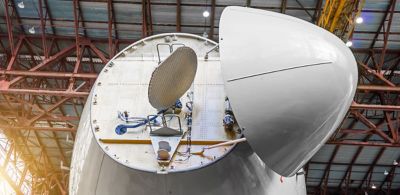
레이더 시스템은 전자파를 사용하여 다양한 조건에서 물체와 거리를 탐지합니다
주목해야 할 네 가지 감지 및 인지 기술
A&D에서 자율성을 주도하는 기술은 다양하고 또 성장하고 있지만, 업계 전반에서 흔히 볼 수 있는 네 가지 유형의 감지 및 인지 시스템이 있습니다. 자율 주행 시스템은 이러한 기술에서 수집된 정보를 처리하여 미리 프로그래밍된 동작에 따라 해석하고 작동할 수 있는 형식으로 전달합니다.
1. 카메라
자율 주행 시스템은 카메라를 사용하여 주변의 시각적 이미지를 기록하고 포착합니다. 따라서 엔지니어는 자율 주행 차량의 속도, 카메라와 피사체 간의 거리, 기상 조건 또는 햇빛이나 눈부심과 같은 기타 외부 현상에 관계없이 정확한 인지 및 석을 위해 고품질의 시각적 정보를 캡처할 수 있는 고해상도 카메라를 개발하는 데 집중합니다.
엔지니어가 카메라를 설계할 때 직면하는 몇 가지 주요 과제는 다양한 조명 조건에서 고품질 이미지를 확보하고 좋은 해상도, 프레임 속도, 움직임 및 전력 소비에 대한 요구 사항 간의 균형을 맞추는 것입니다.
2. 라이다(Lidar) 시스템
라이다(Light Detection and Ranging)는 광 펄스를 사용하여 환경을 매핑하는 원격 탐지 기술입니다. 자율 시스템 외에도 라이다는 종종 지형 분석, 매핑 및 로봇 공학에 사용됩니다. 자율 주행 차량은 향상된 인지를 위해 라이다 시스템을 사용하여 세부적인 3D 지도와 정확한 물체 탐지를 구현합니다.
라이다 시스템은 기능을 충족하기 위해 고해상도 품질을 확보하고, 넓은 범위에서 작동하며, 악천후 조건에서도 성능을 보장해야 합니다.
3. 레이더 시스템
레이더(Radio Detection and Ranging) 시스템은 강력한 물체 감지 및 범위 지정을 위해 전자기파를 사용합니다. 레이더의 몇 가지 일반적인 응용 분야는 항공 교통 관제 및 일기 예보입니다. 레이더 시스템은 다양한 조건에서 신뢰할 수 있는 물체 탐지 및 거리 측정을 수행할 수 있습니다.
레이더 시스템은 복잡한 환경에서도 정확성을 보장해야 하며 다른 레이더 시스템의 간섭을 관리해야 합니다.
4. 열화상 카메라
열화상 카메라는 온도 변화와 열 패턴을 탐지하는 데 사용되며, 자율 주행 시스템이 어두운 환경과 같이 가시성이 낮은 환경에서 주변 환경을 보다 쉽게 인지할 수 있도록 지원합니다.
열화상 카메라를 설계하는 엔지니어는 열 데이터를 다른 센서 데이터와 통합하면서 높은 감도와 해상도를 확보할 수 있는지 확인해야 합니다.
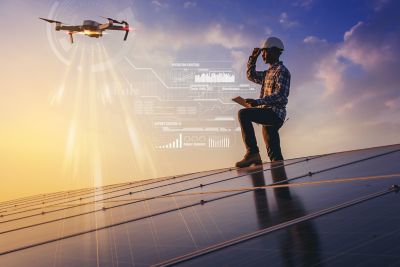
앞으로의 전망: A&D의 감지 및 인지 기술 최적화
감지 및 인지 시스템을 연구하는 엔지니어는 특정 기술에 관계없이 몇 가지 주요 과제에 직면합니다. 여기에는 설계 및 개발 프로세스 전반에 걸쳐 크기, 무게, 전력 및 비용(SWaP-C)을 최적화하고, A&D 산업 부문의 다양한 유형의 플랫폼과 애플리케이션에서도 설계가 최적으로 작동할 수 있도록 보장하고, 중요한 안전 및 성능 표준을 충족하는 것이 포함됩니다.
이러한 장애물을 극복하기 위해 엔지니어링 시뮬레이션 소프트웨어가 다음과 같은 작업을 수행할 수 있는 필수 솔루션으로 부상했습니다.
- 열, 진동, 변형 등을 고려하는 포괄적인 다중물리적 접근 방식을 사용하고 AI를 사용하여 이미징 시스템 최적화 및 더욱 견고한 제품 제조
- 광추적 및 RF 분석을 통해 안테나 및 어레이 설계를 가상으로 검증하고 최적화
- 항공, 육상, 해상, 우주에 걸쳐 다양한 조건과 현실적인 환경에서 시스템 통합 및 검증
- 확장성, 더 효율적인 테스트, 물리적 프로토타입에 대한 요구 감소, 자동화를 통해 효율성 향상 및 출시 시간 단축
디지털 엔지니어링 덕분에 여러 분야의 전문가로 구성된 팀은 기능적일 뿐만 아니라 효율적이고 정확하며 견고하고 가능한 한 빨리 배포할 수 있는 감지 및 인지 설계를 개발할 수 있습니다.
이 분야에서 볼 수 있는 도약의 몇 가지 예는 다음과 같습니다.
- 향상된 시각적 인지, 향상된 다중 주파수 대역 이미징 시스템, 향상된 물체 인지 및 추적 기능을 갖춘 카메라
- 모든 기상 조건에서 신뢰할 수 있는 감지, 향상된 거리 측정, 물체 추적, 최소 중량 및 고스트 타겟 제거 기능을 갖춘 레이더
- 정확한 3D 매핑 및 물체 감지, 최적의 배치 및 장애물 회피를 통한 향상된 탐색 기능을 갖춘 라이다
- 가시성이 낮은 조건에서도 인지 기능이 개선되고 열 패턴 및 이상 징후의 감지 기능이 향상된 열화상 카메라
A&D에서 자율 주행의 미래에 대해 자세히 알아보려면 A&D 분야의 자율 주행 시스템 페이지를 방문하여 전자책, 고객 성공 사례, 기술 솔루션을 확인하십시오.
여러분을 위해 마련했습니다. 여러분이 확인해 볼 수 있는 몇 가지 추가 리소스가 있습니다.
자세한 내용
미래를 탐색하는 기술: A&D 분야의 자율 주행 시스템 페이지를 방문하여 전자책, 고객 성공 사례, 기술 솔루션을 확인하십시오.
Advantage 블로그
Ansys 및 다른 기술 전문가의 기고문을 제공하는 Ansys Advantage 블로그에서는 Ansys 시뮬레이션이 인간의 발전을 촉진하는 혁신을 어떻게 지원하는지에 대한 최신 소식을 계속해서 전해 드립니다.












